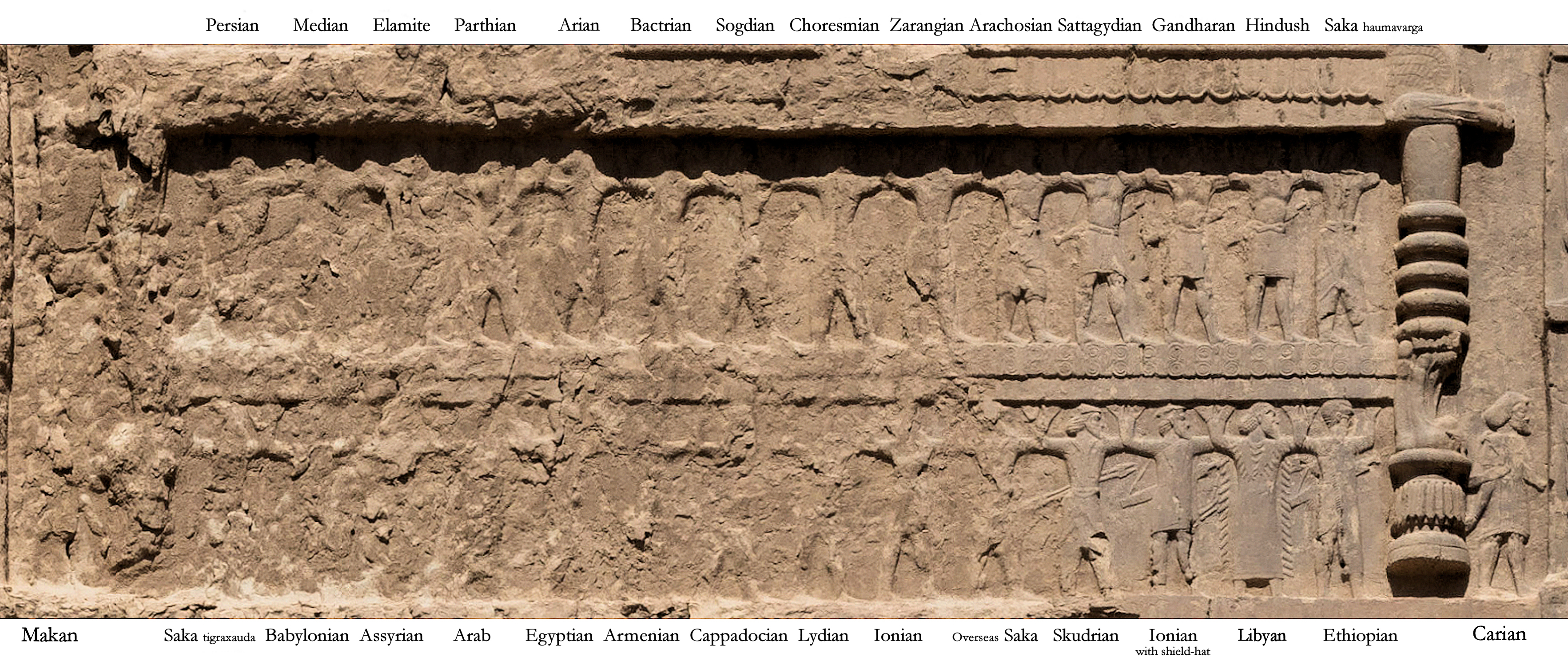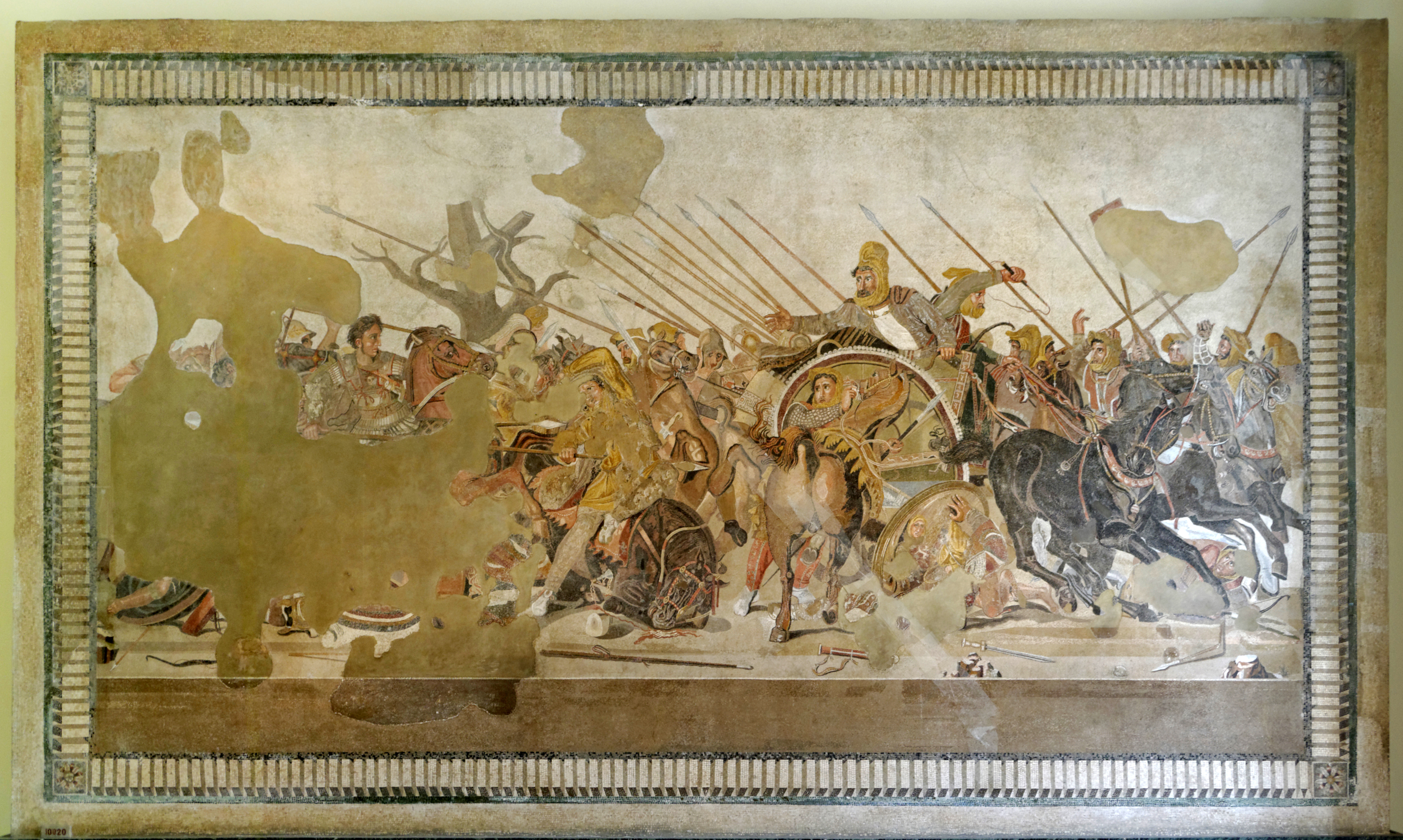|
Ostanes (son Of Darius II)
In Greek sources,. Ostanes is given as the name of one of the sons of the Achaemenid Persian emperor Darius (II) Nothos, and the grandfather of Darius (III) Codomannos. Aside from the name and relationship to the rulers, the sources do not have any information about the person. The sources are Diodorus 17.5.5 and Plutarch ''Artax''. 1.1.5. The latter explicitly names Ctesias (the physician of Artaxerxes (II) Mnemon) as his source. Ctesias, however, names Artostes as the son of Darius II, and Ferdinand Justi suggests that the sources confused Artostes as Ostanes.. His son Arsames (II) married his cousin Sisygambis and had issue: * Darius III Darius III ( ; ; – 330 BC) was the thirteenth and last Achaemenid King of Kings of Persia, reigning from 336 BC to his death in 330 BC. Contrary to his predecessor Artaxerxes IV Arses, Darius was a distant member of the Achaemenid dynasty. ... * Oxathres. References {{reflist Achaemenid princes ... [...More Info...] [...Related Items...] OR: [Wikipedia] [Google] [Baidu] |
Achaemenid Empire
The Achaemenid Empire or Achaemenian Empire, also known as the Persian Empire or First Persian Empire (; , , ), was an Iranian peoples, Iranian empire founded by Cyrus the Great of the Achaemenid dynasty in 550 BC. Based in modern-day Iran, it was the List of largest empires#Timeline of largest empires to date, largest empire by that point in history, spanning a total of . The empire spanned from the Balkans and ancient Egypt, Egypt in the west, most of West Asia, the majority of Central Asia to the northeast, and the Indus Basin, Indus Valley of South Asia to the southeast. Around the 7th century BC, the region of Persis in the southwestern portion of the Iranian plateau was settled by the Persians. From Persis, Cyrus rose and defeated the Medes, Median Empire as well as Lydia and the Neo-Babylonian Empire, marking the establishment of a new imperial polity under the Achaemenid dynasty. In the modern era, the Achaemenid Empire has been recognised for its imposition of a succ ... [...More Info...] [...Related Items...] OR: [Wikipedia] [Google] [Baidu] |
Darius II
Darius II ( ; ), also known by his given name Ochus ( ), was King of Kings of the Achaemenid Empire from 423 BC to 405 or 404 BC. Following the death of Artaxerxes I, in 424 BC or 423 BC, there was a struggle for power between his sons. The victor, Ochus, adopted the name Darius (Greek sources often call him Darius ''Nothos'', "Bastard"). His reign was marked by a series of revolts by various satraps and involvement in the Greek Peloponnesian War. It seems that Darius II was quite dependent on his wife Parysatis. In excerpts from Ctesias some harem intrigues are recorded, in which he played a disreputable part. The Elephantine papyri mention Darius II as a contemporary of the high priest Johanan of Ezra 6:10. Darius II is potentially mentioned in the books of Haggai, Zechariah, and Ezra–Nehemiah of the Hebrew Bible (the Christian Old Testament). There is some debate on whether these books refer to Darius the Great though. Rise to Power Texts from the Babylonian Muras ... [...More Info...] [...Related Items...] OR: [Wikipedia] [Google] [Baidu] |
Darius III
Darius III ( ; ; – 330 BC) was the thirteenth and last Achaemenid King of Kings of Persia, reigning from 336 BC to his death in 330 BC. Contrary to his predecessor Artaxerxes IV Arses, Darius was a distant member of the Achaemenid dynasty. During his early career, he was reportedly an obscure figure among his peers and first rose to prominence during the Cadusian expedition of Artaxerxes III in the 350s BC. As a reward for his bravery, he was given the Satrapy of Armenia. Around 340 BC, he was placed in charge of the royal "postal service," a high-ranking position. In 338 BC, Artaxerxes III met an abrupt end after being poisoned by the court eunuch and chiliarch (''hazahrapatish'') Bagoas, who installed Artaxerxes' youngest son Arses on the throne. He only reigned for a few years, until Bagoas had him poisoned as well. Darius was subsequently installed on the throne and soon forced Bagoas to drink his poison after discovering that the eunuch had planned to poison him as w ... [...More Info...] [...Related Items...] OR: [Wikipedia] [Google] [Baidu] |
Diodorus Siculus
Diodorus Siculus or Diodorus of Sicily (; 1st century BC) was an ancient Greece, ancient Greek historian from Sicily. He is known for writing the monumental Universal history (genre), universal history ''Bibliotheca historica'', in forty books, fifteen of which survive intact, between 60 and 30 BC. The history is arranged in three parts. The first covers mythic history up to the destruction of Troy, arranged geographically, describing regions around the world from Egypt, India and Arabia to Europe. The second covers the time from the Trojan War to the death of Alexander the Great. The third covers the period to about 60 BC. ''Bibliotheca'', meaning 'library', acknowledges that he was drawing on the work of many other authors. Life According to his own work, he was born in Agira, Agyrium in Sicily (now called Agira). With one exception, classical antiquity, antiquity affords no further information about his life and doings beyond his written works. Only Jerome, in his ''Ch ... [...More Info...] [...Related Items...] OR: [Wikipedia] [Google] [Baidu] |
Plutarch
Plutarch (; , ''Ploútarchos'', ; – 120s) was a Greek Middle Platonist philosopher, historian, biographer, essayist, and priest at the Temple of Apollo (Delphi), Temple of Apollo in Delphi. He is known primarily for his ''Parallel Lives'', a series of biographies of illustrious Greeks and Romans, and ''Moralia'', a collection of essays and speeches. Upon becoming a Roman citizen, he was possibly named Lucius Mestrius Plutarchus (). Family Plutarch was born to a prominent family in the small town of Chaeronea, about east of Delphi, in the Greek region of Boeotia. His family was long established in the town; his father was named Autobulus and his grandfather was named Lamprias. His brothers, Timon and Lamprias, are frequently mentioned in his essays and dialogues, which speak of Timon in particular in the most affectionate terms. Studies and life Plutarch studied mathematics and philosophy in Athens under Ammonius of Athens, Ammonius from AD 66 to 67. He attended th ... [...More Info...] [...Related Items...] OR: [Wikipedia] [Google] [Baidu] |
Ctesias
Ctesias ( ; ; ), also known as Ctesias of Cnidus, was a Greek physician and historian from the town of Cnidus in Caria, then part of the Achaemenid Empire. Historical events Ctesias, who lived in the fifth century BC, was physician to the Achaemenid king, Artaxerxes II, whom he accompanied in 401 BC on his expedition against his brother Cyrus the Younger. Ctesias was part of the entourage of King Artaxerxes at the Battle of Cunaxa (401 BC) against Cyrus the Younger and his Greek mercenaries called the Ten Thousand, when Ctesias provided medical assistance to the king by treating his flesh wound. He reportedly was involved in negotiations with the Greeks after the battle, and also helped their Spartan general Clearchus before his execution at the royal court at Babylon. Ctesias was the author of treatises on rivers and on the Persian revenues, as well as an account of India, '' Indica'' (), and of a history of Assyria and Persia in 23 books, ''Persica'' (), drawn from documen ... [...More Info...] [...Related Items...] OR: [Wikipedia] [Google] [Baidu] |
Artaxerxes II
Arses (; 445 – 359/8 BC), known by his regnal name Artaxerxes II ( ; ), was King of Kings of the Achaemenid Empire from 405/4 BC to 358 BC. He was the son and successor of Darius II () and his mother was Parysatis. Soon after his accession, Artaxerxes II faced opposition from his younger brother Cyrus the Younger, who assembled an army composed of troops from his Lydian and Ionians, Ionian satrapies as well as Greek mercenaries in his bid for the throne. The forces of the brothers clashed at Battle of Cunaxa, Cunaxa in 401 BC, which resulted in the defeat and death of Cyrus. Following this, Artaxerxes II had to contend with several other revolts; a revolt by Evagoras I () in Cyprus between 391–380 BC, by the Phoenicians in , and most importantly, the revolts by the western satraps (known as the Great Satraps' Revolt) in the 360s and 350s BC, led by distinguished figures such as Datames, Ariobarzanes of Phrygia, Ariobarzanes, and Autophradates. The rulers of the Parthian Empir ... [...More Info...] [...Related Items...] OR: [Wikipedia] [Google] [Baidu] |
Sisygambis
Sisygambis (; died 323 BCE) was the mother of Darius III of Persia, whose reign was ended during the wars of Alexander the Great. After she was captured by Alexander at the Battle of Issus, she became devoted to him, and Alexander referred to her as "mother". Early life She may have been the daughter of king Artaxerxes II Mnemon, or possibly of his brother Ostanes. If the latter, she married her own brother Arsames (an ancient Achaemenid tradition).. Another possibility is that she was the daughter of an Uxian leader. She gave birth to Darius, Oxyathres, and possibly also Stateira I. Alexander's invasion At the Battle of Issus (333 BCE), Darius's army was routed by Alexander the Great, and the Persian king fled the field, leaving his extended family—including his mother; his wife, Stateira I; his children; and many others—to the mercy of Alexander. He captured them but treated them with all dignity, where many others would have executed them out of hand. When Alexande ... [...More Info...] [...Related Items...] OR: [Wikipedia] [Google] [Baidu] |
Oxyathres Of Persia
Oxyathres (; in Old Persian ''Vaxšuvarda''; lived 4th century BC) was a brother of the Persian king Darius III Codomannus. He was the son of a certain Arsames, and grandson of Ostanes. He was distinguished for his bravery and talent, in Iranica and in the , 333 BC, took a prominent part in the combat in defence of the king, when attacked by the ian cavalry under |






